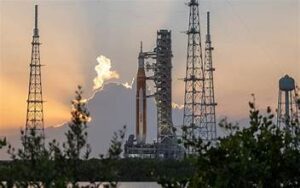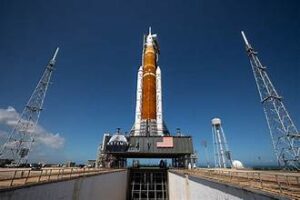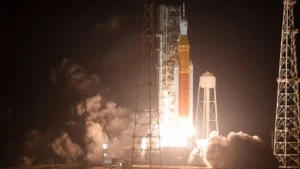
NASA’s Artemis Program is making headlines as it progresses into 2024. Aiming to return humans to the Moon and establish a sustainable presence, Artemis is a cornerstone of NASA’s efforts to explore beyond Earth orbit. This article explores the latest updates and key milestones of the Artemis Program, providing a comprehensive look at what to expect in the coming year.
Overview of the Artemis Program
The Artemis Program, named after the ancient Greek goddess of the Moon and twin sister of Apollo, is NASA’s ambitious initiative to land the first woman and the next man on the lunar surface by the mid-2020s. The program is not only about returning to the Moon but also establishing a long-term human presence, paving the way for future Mars missions.
Key Objectives for 2024
1. Artemis II Mission: Crewed Lunar Flyby
In 2024, the Artemis II mission is slated to become the first crewed mission of the Artemis Program. This mission will see astronauts orbit the Moon in a test of the Orion spacecraft’s capabilities, including its life-support systems and other crucial technologies. The spacecraft will not land but will conduct a lunar flyby, providing essential data to ensure safety and functionality for future lunar landings.
2. Lunar Gateway Progress
A major component of Artemis is the Lunar Gateway, a space station that will orbit the Moon and serve as a staging point for lunar surface missions. In 2024, NASA plans to advance the construction of this Gateway, with several critical modules expected to be launched and assembled. The Gateway will facilitate research and provide a platform for missions to deeper space, including Mars.
3. Surface Habitat Development
To ensure a sustainable human presence on the Moon, NASA is working on the development of lunar surface habitats. These habitats will support astronauts for extended stays on the lunar surface, with facilities for scientific research, life support, and more. In 2024, NASA will test various habitat designs and technologies to ensure they meet the mission’s requirements.
4. Artemis III Mission Preparation
Artemis III, the mission planned to return humans to the lunar surface, is progressing through its preparatory phases. While the actual landing is expected to occur after 2024, significant milestones in 2024 will include finalizing the lunar lander design, testing landing technologies, and developing strategies for safe lunar surface operations.
Technological Innovations and Partnerships
1. Advancements in Rocket Technology
The Space Launch System (SLS) rocket, which will propel the Artemis missions, is undergoing final preparations and testing. This heavy-lift rocket is designed to carry the Orion spacecraft and other payloads beyond Earth orbit. Ongoing tests and refinements in 2024 will be crucial for the rocket’s performance in upcoming missions.
2. Public and Private Sector Collaboration
NASA continues to foster partnerships with private companies to advance its goals. Companies like SpaceX, Blue Origin, and Lockheed Martin are playing pivotal roles in the development of technologies and systems necessary for Artemis. These collaborations aim to enhance mission capabilities, reduce costs, and accelerate timelines.
3. International Cooperation
Artemis is not just an American endeavor but a global one. International partners, including the European Space Agency (ESA) and the Canadian Space Agency (CSA), are contributing to the Lunar Gateway and other aspects of the program. Their involvement will strengthen international cooperation and contribute to the program’s success.
Public Engagement and Educational Outreach
NASA is committed to engaging the public and inspiring the next generation of explorers through various outreach efforts. In 2024, NASA will continue to provide educational resources, live mission updates, and interactive experiences related to the Artemis Program. These efforts aim to spark interest in space exploration and STEM fields among students and the general public.
Challenges and Opportunities
While the Artemis Program is ambitious and full of promise, it faces several challenges. Technical hurdles, budget constraints, and coordination among multiple stakeholders are just a few of the issues that NASA must navigate. However, overcoming these challenges presents opportunities for innovation, international collaboration, and scientific discovery.
Conclusion
As we move through 2024, the Artemis Program is set to achieve significant milestones that will shape the future of lunar exploration. With the Artemis II crewed lunar flyby, advancements in the Lunar Gateway, and ongoing preparations for Artemis III, NASA is making substantial progress towards its goal of returning humans to the Moon and beyond. The innovations and collaborations driving this program highlight the excitement and potential of space exploration as we look forward to a new era of discovery.



